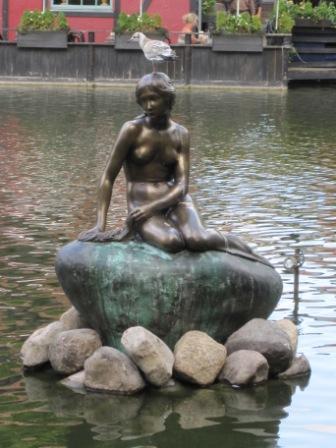Liberal and wealthy Denmark has xenophobic streak
September 11th, 2010 Katherine Dunn, International News Services
Katherine Dunn, International News Services
This summer in a characteristic feat of headline grabbing, the Danish People’s Party, or the Dansk Folkparti, announced their proposal to stem the flow of non-Western immigrants into the country. But such a pronouncement was nothing new. The party has made its name on an anti-immigration platform in this small, still culturally homogenous Scandinavian country.
And it spends much of its time trying to ban minarets and attempting to uphold its particular brand of nostalgic ‘Danishness’. As a result, alongside the Netherlands Freedom Party and the British National Party, the DF has become a poster child for a wave of xenophobic sentiment on the rise across Europe.
But there is a difference between Denmark and many other Western European countries. In a nation famous for being one of the wealthiest and most tolerant in the world, albeit the home of the controversial Mohammed cartoons, this far-right party is not merely on the rise. It is already entrenched.
The DF currently makes up about 17% of the Danish Parliament, which has proportional representation. In the UK, the BNP holds no seats in Westminster, and the Swedish equivalent (the Sweden Democrats) is currently unrepresented, although an election this autumn may see their odds change. The DF is also the third support in Denmark’s current coalition government, made up of the Liberals and Conservatives. Its politics, although deemed outrageous by many Danes, cannot be completely dismissed in the Folketinget, Denmark’s parliament.
And while the DF seems a world away from the liberal student circles and hip cafes of Copenhagen, the party betrays a dark underside of Denmark that is both resistant to change and deeply suspicious of outsiders. Immigrants make up about 12% of the population, though the topic dominates the media and public debate. Among the small cities and towns where most Danes live, having a German grandmother is still a distinction, and the words ‘immigrant’ and ‘Muslim’ are used interchangeably.
Danes are deeply protective of their language and culture, and the political makeup and enormous welfare state of the country are just as much a part of their national identity as cycling and open-faced sandwiches. But the question of where immigrants fit into this identity, and if they can ever be truly ‘Danish’, has been a strained question since the first wave arrived from Turkey in the late 1960s. As a result, according to the Danish professor Ulf Hedetof, Danish multiculturalism is effectively an oxymoron.
But while the DF still insist they will never allow Denmark to become a country of immigrants, they are already too late. The streets of Copenhagen offer Thai food and shawarma, and women wear hijab or the occasional sari. Even tough immigration laws will not make Denmark the exception to an increasingly diverse Europe. Some onlookers say it’s perhaps time many Danes stop putting so much energy into keeping people out, and start trying to find a way for Denmark to be both Danish and diverse.